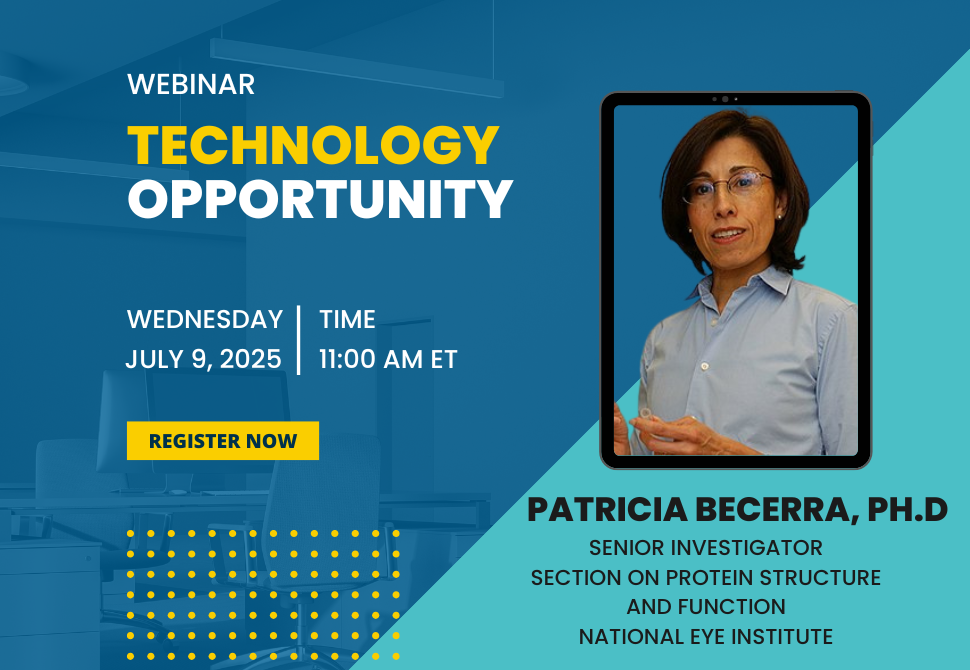Webinar: Novel Treatment for Retinitis Pigmentosa

July 9, 2025 | 11:00 AM – 12:00 PM
Register to attend a free NIH webinar to learn about a potential novel treatment for Retinitis Pigmentosa (RP), an eye disorder that impacts 100,000 in the US. and 1.5 million worldwide. Dr. S. Patricia Becerra and her team at the National Eye Institute developed pigment epithelium-derived factor (PEDF) peptide, a novel therapeutic. Attend to learn more about the technology and opportunities to help develop and commercialize it.
About the Technology
RP is a group of rare eye diseases that affect the retina. RP makes cells in the retina break down slowly over time, causing vision loss. The technology conceived by Dr. Becerra has the potential to treat RP patients and may also protect retinal cells from damage associated with glaucoma and age-related macular degeneration (AMD).
- PEDF peptide contains a 17-amino acid residue section of the human PEDF protein and incorporates an amino acid substitution at position 105. This changes the original histidine to an alanine (PEDF 17-mer[H105A]).
- As demonstrated in in vivo mouse models of RP, this amino acid substitution exhibits a highly potent effect on photoreceptor protection.
- The treatment method proposes an eyedrop formulation to deliver the novel PEDF peptide to a patient’s eye, in addition to an AAV2-based delivery system to deliver a nucleic acid encoding the novel PEDF peptide, or the PEDF 17-mer[H105A] peptide.
Competitive Advantages
- Less intrusive and expensive: Eye drops are a less intrusive and expensive alternative to current the FDA-approved retinal implant being used to treat late-stage RP.
- Accessibility: Eye drop PEDF peptide formulation would be accessible to more patients than a retinal implant.
- Easy to administer: Eye drop PEDF peptide formulation provides an easy administration route.
- Mimics the natural protective process: PEDF peptide formulation mimics the natural protective process lost in patients with inherited eye diseases contributing to RP.
- Protection for other retinal cells: May also serve to protect other retinal cells such as retinal ganglion cells that are affected negatively in glaucoma.
Who should attend?
- Business development professionals
- Scientific and drug development professionals
- Biotech/pharma/academia researchers
- Investors and entrepreneurs
Why Attend?
- Assess co-developing the technology
- Interact with the inventor, ask questions and provide feedback
- Learn how to partner with the NIH facilitated by the NCI Technology Transfer Center
If you are interested in learning more about how to co-develop and/or license this technology, please reach out to michael.salgaller@nih.gov.
